Whether you’re a pro or just enjoy beer league hockey with friends, a warm-up and cool-down routine is important.
As a Strength and Conditioning Coach who worked with the Vancouver Canucks for close to 20 years, I know how helpful this is for performance, recovery and injury prevention.
Why are hockey stretches important?
Stretching is an important part of both warm-ups and cool-downs. It helps prepare your body for the game ahead and recover afterwards.
Preparation for a physical event like hockey starts by moving your body and slowly raising your heart rate. Dynamic stretches work best because they help to increase your blood pressure and heart rate gradually and move the body dynamically through ranges of motion (more on that later).
Once the game is over and you want to shift into relaxation and recovery mode, static stretching may help.
You should think of hockey as not just the game itself but everything that goes into it beforehand and afterward—warming up, hydrating, getting into your gear, playing the game, cooling down, and getting a good night’s sleep. It’s a great way to approach hockey, or any event, for that matter.
The hockey warm-up
A good warm-up routine gradually ramps up the body in preparation for the game. It should increase your heart rate, body temperature and blood pressure moderately rather than going from 0-100kms suddenly and placing extra stress on your body.
Warming up isn’t just physical; it also involves mental preparation. Listening to music, thinking about how you want to play and forgetting about any outside tasks or obligations helps you transition to the game.
Pre-game dynamic hockey stretches
World’s greatest stretch
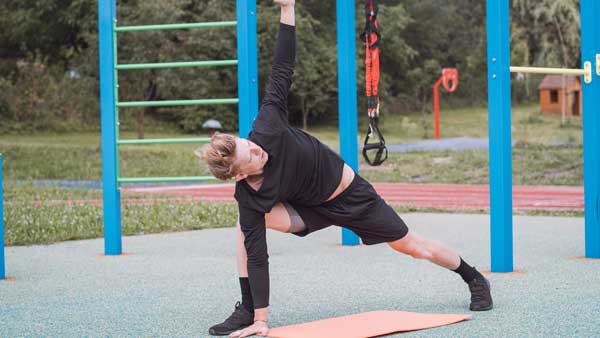
Dynamic stretches combine movement and stretching and are ideal for warm-ups. If you look up the ‘world’s greatest stretch,’ you’ll see it does both, creating in sequence a forward lunge while reaching your arm up and rotating your torso.
Side Lunge
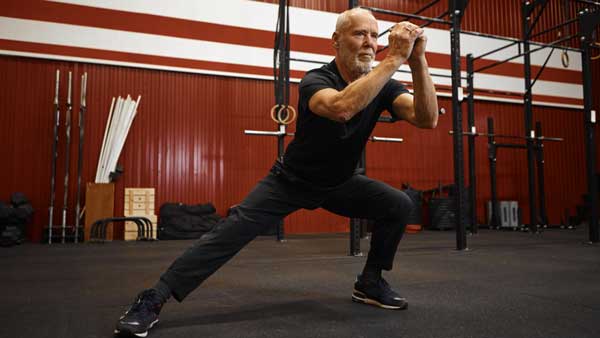
The side lunge is another example of a dynamic stretch. Step to one side to stretch your groin, return to a standing position and then step to the other side. You can also reach your arm overhead, bending further into the side you’ve stepped.
Leg Swings
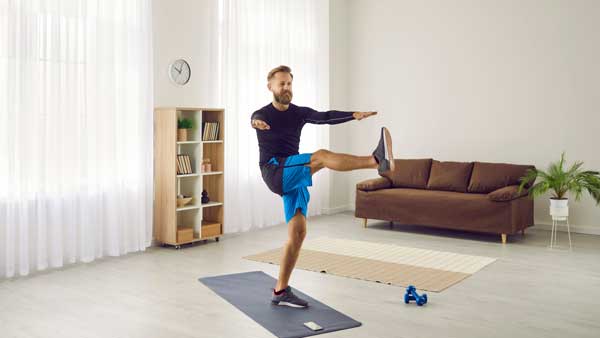
Leg swings can also be beneficial. Do these either free-standing or while holding onto a wall for balance. They improve flexibility and blood flow and help prepare your joints and muscles for increased activity.
These simple stretches don’t take a lot of time and are effective with 3-5 repetitions per side (and up to 10 per side for the leg swings). The key is to do what’s comfortable. You’re doing this to prepare your body for activity rather than treating it as the actual workout.
Check out this article by Tommy Europe for a good dynamic stretching routine.
Timing your warm-up
You can definitely stretch once you’re out on the ice, but you’ll likely see more benefits from a dynamic stretch done off-ice first. You can move around more with a wider range of motion since you aren’t restricted by bulky gear. And you won’t run into anyone or have pucks to dodge.
Generally, you’ll want to warm up as close to game time as possible. However, if your only free time occurs before you get to the rink, it’s better to warm up then rather than not at all.
The cool-down
A cool-down is the opposite of a warm-up. The goal is to relax after the excitement of a game and bring yourself down gradually. A focus on breathing is important here.
If you only have a couple of minutes to cool down after a game, try taking a few deep breaths. Breathe in for 4 seconds through your nose and out through your mouth for 7-8 seconds. Do it for 2-3 mins, and it will help your body recover.
Any type of static stretching that targets your groins, quads, hamstrings, and lower back works well during a cool-down. While holding a static stretch, prioritize your breathing instead of the stretch itself.
Instead of counting each stretch, 1, 2, 3, to reach 30 seconds, another strategy is to hold the stretch for three long, focused breaths. This will relax your body and provide more benefits from the stretch.
While doing these lower body stretches, the goal should be to relax the muscle tissue rather than improve the range of motion.
How the pros do it
There’s a variety of things that players do after a game to get ready for the next game. We’ve always said the next game starts at the end of the game they’re playing. So whatever they do from that time on will affect their next day’s play or next game’s play.
Some players will do an active recovery, like lightly riding a bike or walking on a treadmill. Some will work out, and some will just stretch. The workouts are fairly short, around 15-20 minutes, and it depends on how many minutes a player played that night.
One more thing: Hydrate

When you sleep, you actually dehydrate a little, so you’re losing fluid. You’ll want to drink water in the morning and throughout the day to replenish yourself. If you frontload or preload your hydration, it’s better. Instead of starting with a deficit, you’re starting with a surplus.
The aim is to begin your hockey game hydrated—so you can make it to the final buzzer without feeling dehydrated and completely exhausted.
What’s a stretch that works wonders for you and your game, whether pre- or post-game? Let us know in the comments below!

Men’s Health Checklist
Find out what tests you need and when. Stay up-to-date on screening, exams and vaccines, and assess how stress impacts your mental health.

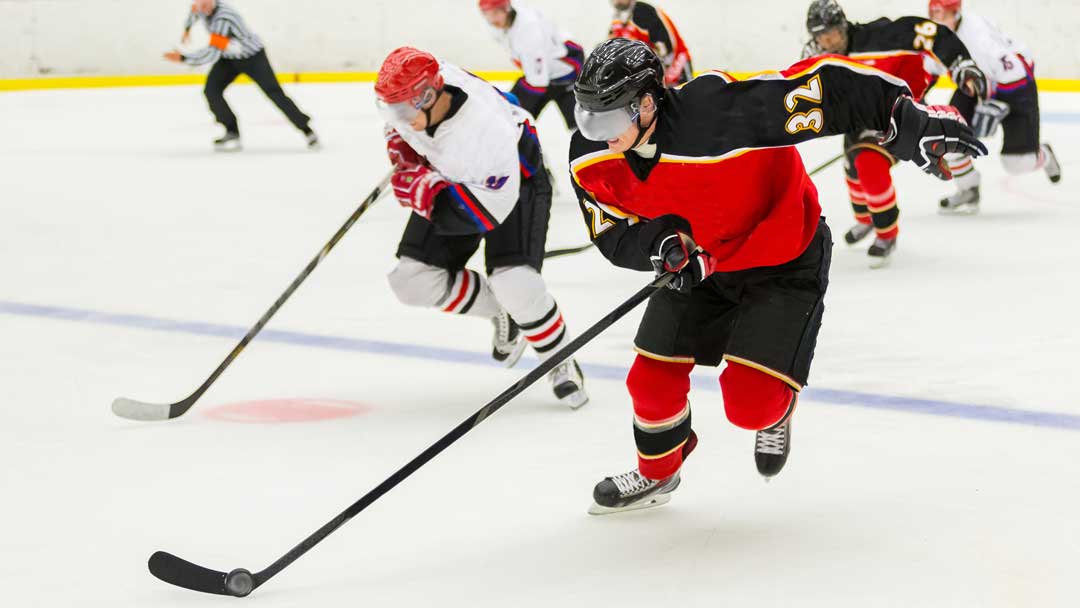

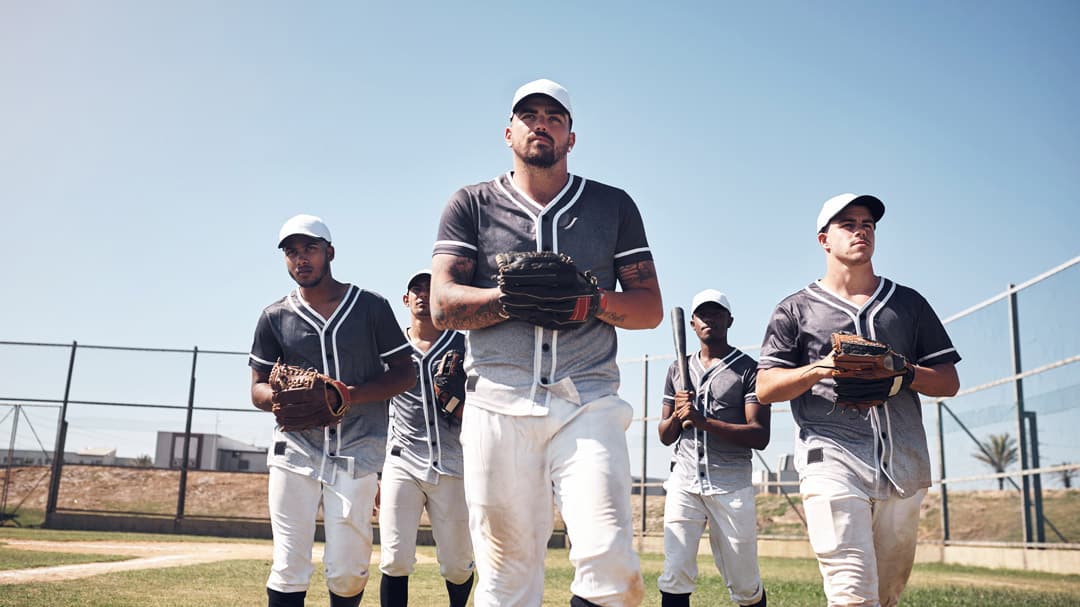
Let’s Talk!
Did you enjoy this article? Let us know in the comments.
0 Comments